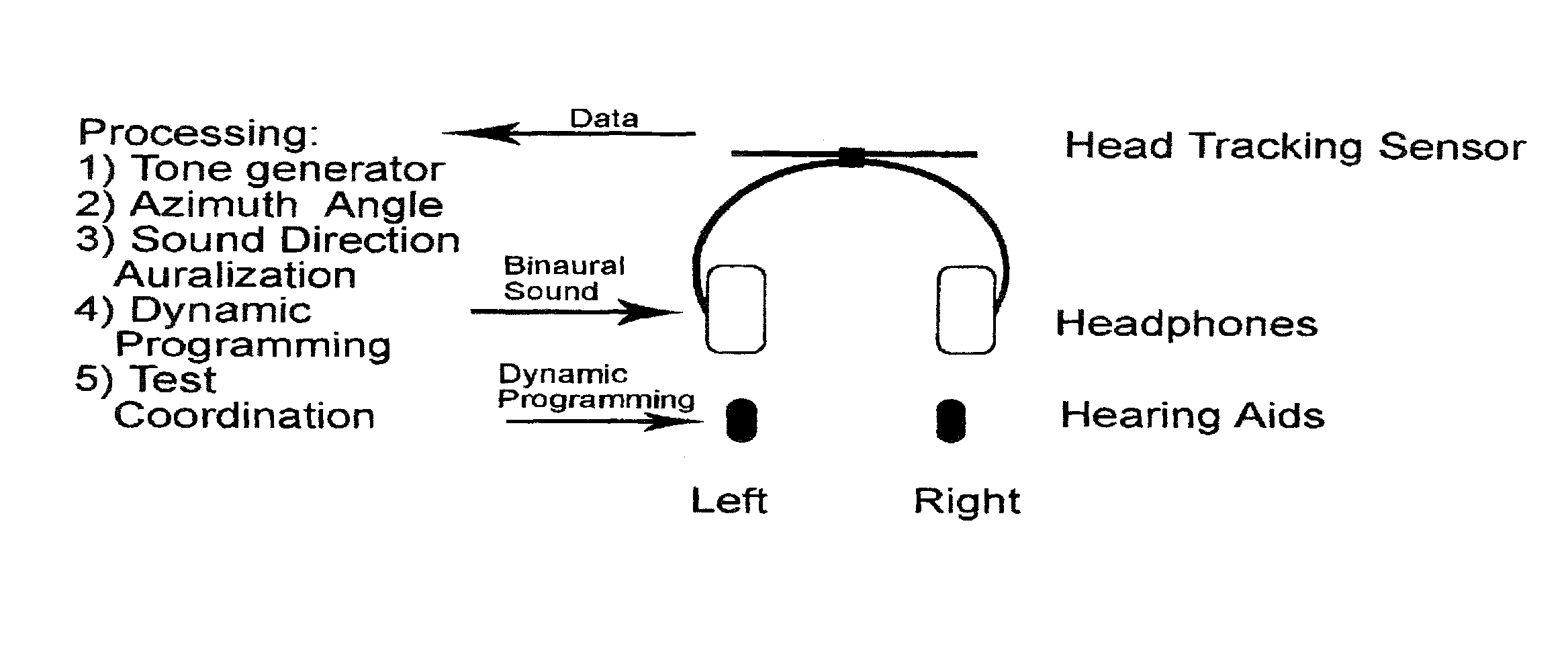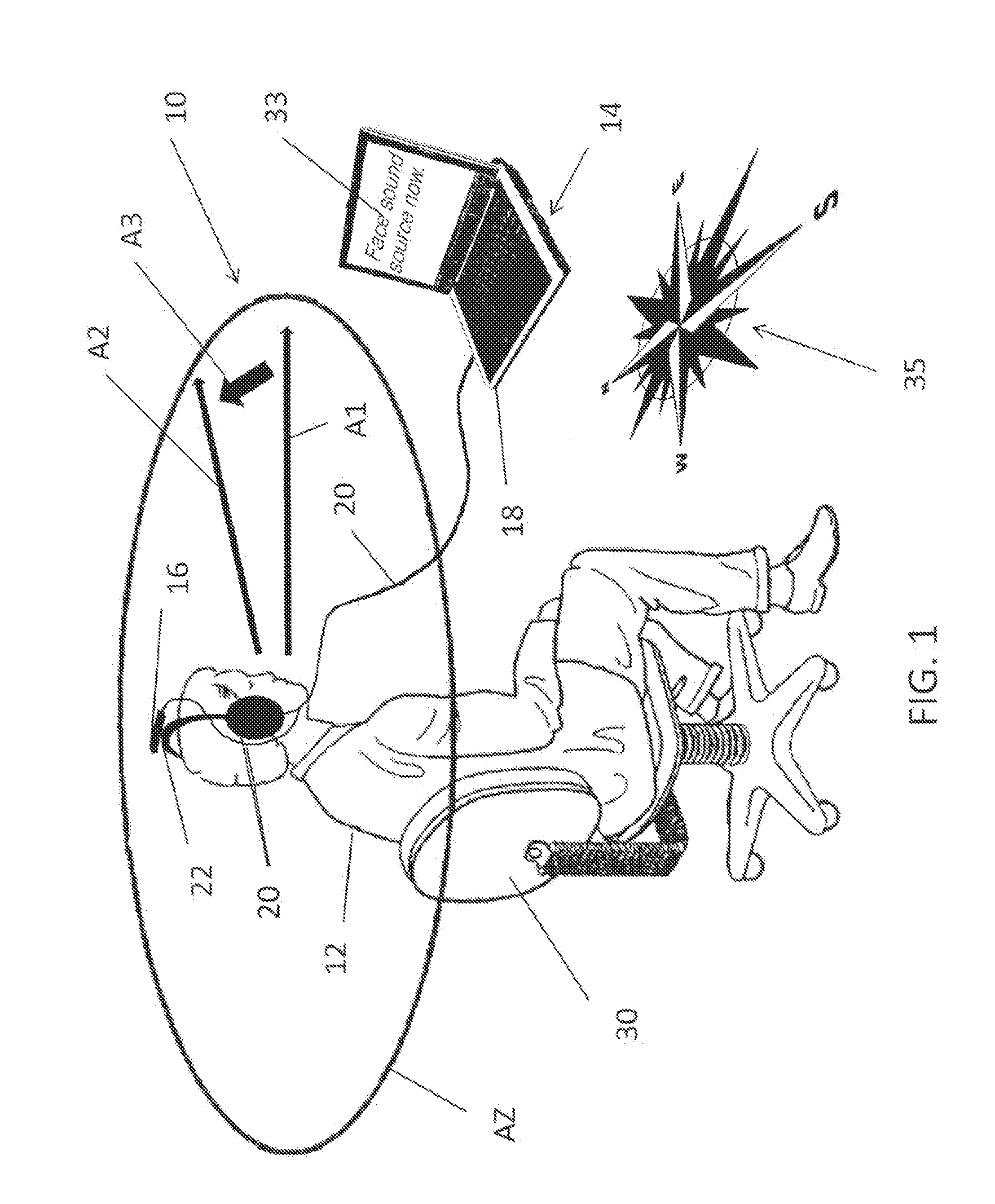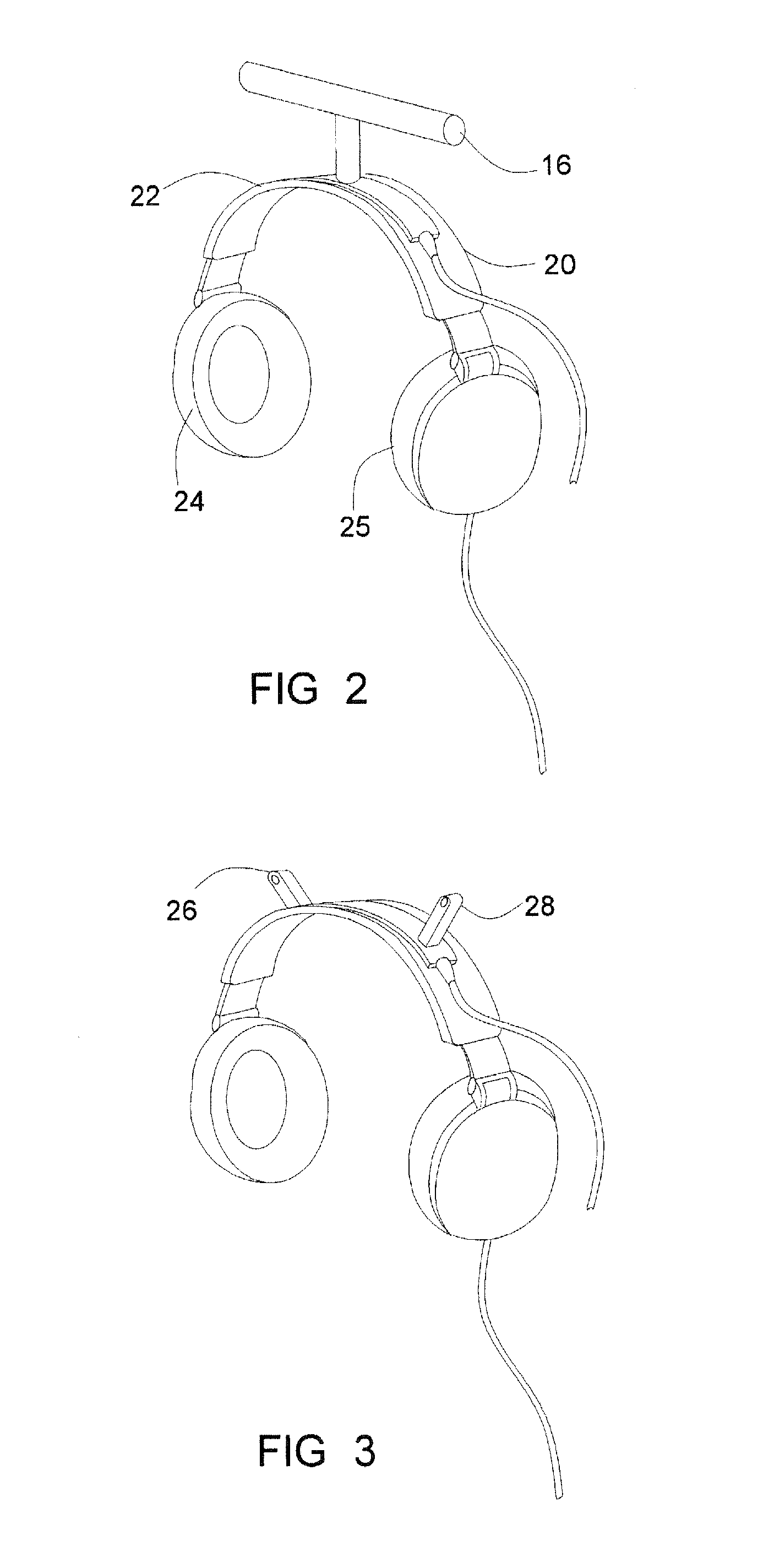Method and apparatus for directional acoustic fitting of hearing aids
a technology for acoustic fitting and hearing aids, applied in the field of hearing aids, can solve the problems of reducing the ability to perceive sound direction, using hearing aids, further reducing the perception of sound direction, etc., and achieve the effect of accurately determining the individual's perception of loudness differences, accurate measurement, and improved signal-to-noise ratio 3 db
- Summary
- Abstract
- Description
- Claims
- Application Information
AI Technical Summary
Benefits of technology
Problems solved by technology
Method used
Image
Examples
Embodiment Construction
[0068]Those of ordinary skill in the art will realize that the following description of the present invention is illustrative only and not in any way limiting. Other embodiments of the invention will readily suggest themselves to such skilled persons.
[0069]FIG. 1 illustrates a hearing aid fitting system, generally indicated at 10 in accordance with the principles of the present invention. An assessment of sound direction perception of an individual 12 is accurately made across a broad dynamic range in multiple frequency bands. Unlike prior art fitting systems, the tones presented to the individual 12 in the hearing loss assessment and fitting system 10 of the present invention are generated by an audiometer 14, which includes a head azimuth detecting device 16 that is measured in near real time by a computer 18 or other processing device that also provides corresponding binaural feedback and affirmation to the individual being fitted via a pair of headphones 20. The present hearing ...
PUM
 Login to View More
Login to View More Abstract
Description
Claims
Application Information
 Login to View More
Login to View More - R&D
- Intellectual Property
- Life Sciences
- Materials
- Tech Scout
- Unparalleled Data Quality
- Higher Quality Content
- 60% Fewer Hallucinations
Browse by: Latest US Patents, China's latest patents, Technical Efficacy Thesaurus, Application Domain, Technology Topic, Popular Technical Reports.
© 2025 PatSnap. All rights reserved.Legal|Privacy policy|Modern Slavery Act Transparency Statement|Sitemap|About US| Contact US: help@patsnap.com



